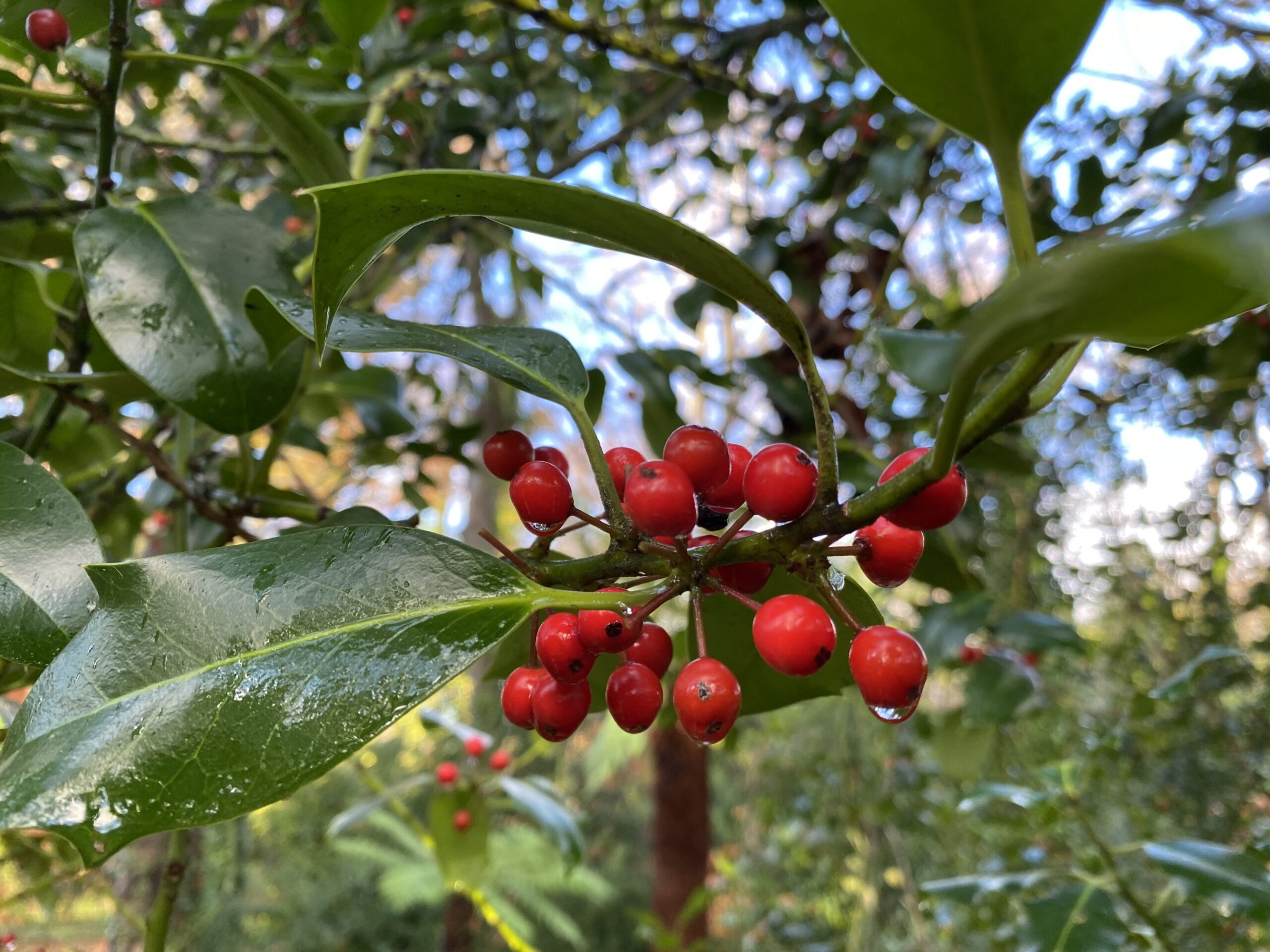The red berries and thorny green leaves of the holly tree are iconic colours of Christmas and the winter solstice dating back since early civilisation. Lots of folklore and myth surround the holly tree; a tree that comes into its own when most of the rest of us are diving for cover from the winter cold. I think my favourite tale is the Norse legend that believed that the holly and the oak fought each year; the holly was the king of winter and long nights, while the oak was king of the summer and long days. But in reality it is a reflection of how the natural world is so well balanced, the holly tree provides food for birds and animals when so little else is available, the holly thrives in dark and shaded places whereas an oak needs brightness to thrive. That blend of holly and oak growing side by side provides for that all important mix to enable biodiversity that supports a wider healthier sustainable ecosystem.
The holly tree makes a great choice for most gardens, they grow slowly so they are very easy to maintain. They shed very little leaf litter, so less to clean up. They attract birds, particularly the thrush, who really like ripe holly berries. They grow in shaded areas or under other larger trees which provides additional cover for birds and mammals like the hedgehog.
If you are thinking of planting a holly tree, try and get a female one, which will produce berries, and a male one which is needed to pollinate, they typically should be spaced within 20 meters of each other to allow for efficient pollination.
The holly is a versatile tree that I think punches way above its weight in terms of decoration, maintenance and biodiversity and what’s more, it’s a native Irish tree, extra sustainability kudos!! We hope that you and yours have a very happy Christmas and we hope that you will join us for a coffee in 2021.
#biodiversity #sustainability #Christmasholly
